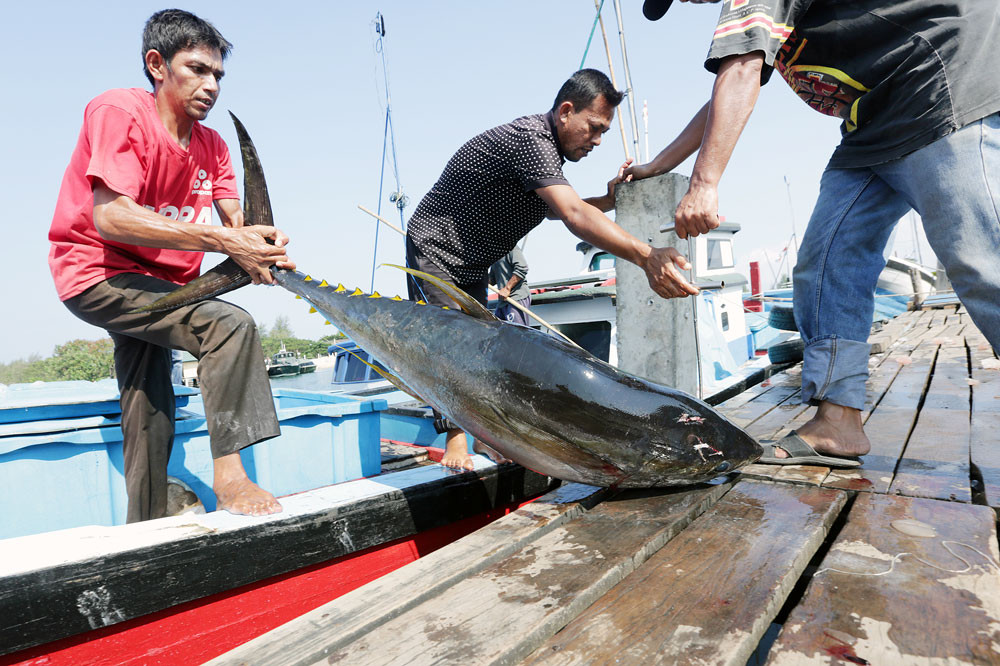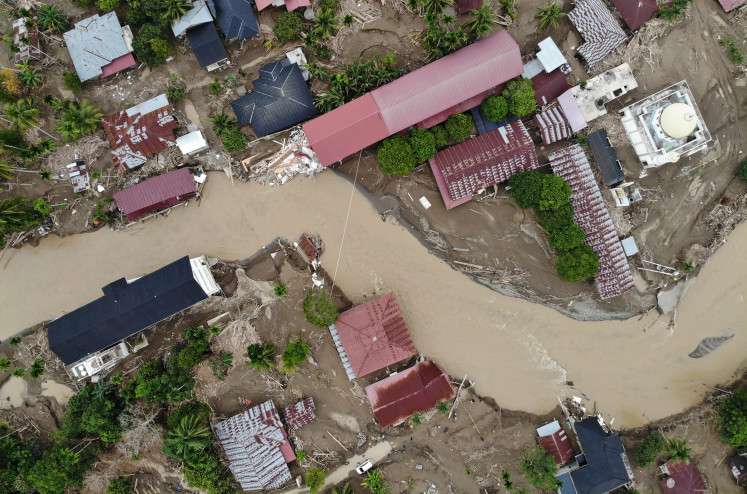Popular Reads
Top Results
Can't find what you're looking for?
View all search resultsPopular Reads
Top Results
Can't find what you're looking for?
View all search resultsIs Indonesia really top global tuna exporter?
Change text size
Gift Premium Articles
to Anyone
T
he media, both local and foreign, have recently quoted Maritime Affairs and Fisheries Minister Susi Pudjiastuti as saying that Indonesia is the world’s largest tuna supplier.
The statement has gone viral on social media, but data and facts are needed to support such a claim so that the public receives the right information.
According to the Regional Fisheries Management Organization (RFMO), of which Indonesia is a member, global tuna catches in 2016 amounted to 4.86 million tons, while Indonesia’s tuna catch that was reported to the RFMO neared 670,000 tons, 75 percent of which came from the Pacific Ocean, while the remainder was from the Indian Ocean, including the expensive bluefin tuna.
Global tuna catches dropped to 4.73 million tons in 2017, when Indonesia’s reported tuna catch went down to nearly 598,000 tons. Indonesia’s tuna catch in the Indian Ocean was 131,600 tons, 375 tons of which was bluefin tuna, in the same year, according to Indian Ocean Tuna Commission (IOTC) data.
However, according to Indonesia’s country report, the tuna catch in 2017 exceeded 165,700 tons, or more than 34,000 tons more than the IOTC data indicated. Synchronization of data is imperative as the total catch would determine the amount of the variable fee Indonesia has to pay to the IOTC. There are 163 registered vessels weighing a total of 14,078 gross tons (GT) operating in Indonesia.
On the other side, in 2017 Indonesia reported more than 466,000 tons of tuna caught in the Pacific Ocean to the Western and Central Pacific Fisheries Commission (WCPFC), with more than 60 percent came from the country’s coastal waters.
The capacity of Indonesia’s tuna catching armada registered with the RFMO has undeniably plummeted since 2014, but ironically its tuna catch has remained relatively stable in the last four years.
The government’s claim that the eradication of illegal, unreported and unregulated fishing has helped increase the potential fishery resources has raised many eyebrows as the volume of tuna and skipjack exports has relatively decreased since 2015. Furthermore, tuna and skipjack are not on the list of potential fishery resources stipulated in Maritime Affairs and Fisheries Ministerial Decree No. 47/2016 and Maritime Affairs and Fisheries Ministerial Decree No. 50/2017.
Supposedly, the explanation is that tuna and skipjack are considered highly migratory species. However, other highly migratory species such as marlin and swordfish are included on the list.
To manage tuna and skipjack resources for optimum results, all stakeholders should play their parts. Indonesia’s potential fishery resources of 12.54 million tons is something to be proud of, but ironically they are underutilized. Only 3.6 percent of the potential has been exploited using fishing vessels weighing 30 GT or more. This suboptimal utilization is surely not in accordance with the fisheries law and completely contradicts Indonesia’s global maritime axis campaign.
Referring to the IOTC and WCPFC reports, Indonesia ranked first as a global tuna-catching country from 2011 to 2017. In the Pacific Ocean, Indonesia topped the list ahead of Papua New Guinea, Japan, South Korea and Taiwan.
In the Indian Ocean, Indonesia dropped to third place for the first time ever in 2017, trailing Spain at the top and the Maldives in second place. Indonesia will slip further in the rankings if significant policy changes do not happen and the high seas remain underutilized.
Data from United Nations Comtrade, International Trade Center, in 2018 shows Thailand is the number one global tuna exporter with 535,612 tons, valued at about US$2.32 billion, followed by Spain, Taiwan, Ecuador, China, South Korea, Papua New Guinea and the Seychelles. Indonesia ranks only ninth with 167,695 tons worth $710.11 million, down from sixth in 2017.
Export value is an important indicator, but in the fisheries, export volume is no less important, because it indicates whether production capacity is optimally utilized.
It turned out that Indonesia’s tuna exports only account for 30 percent of its average production, which is considered low. Whether the data is inaccurate or the quality of our tuna is not fit for export is the work of policymakers. Ironically, although the country’s total tuna catch volume is high, the value of tuna imports in 2018 also increased from previous years.
Indonesia definitely is not the world’s largest tuna exporter, but it can be at least among the top three in the next five years if policy changes are put in place to support a sustainable tuna resources utilization. Acceleration of the national tuna industry will be hard to achieve if we only rely on small fishing vessels that mostly operate in coastal waters.
The recent presidential election provides us a good moment to realize the goal. The next government should start planning a strategy and mobilize the full force of the nation’s fishing fleet to the Indonesian exclusive economic zone and the high seas to increase tuna catches. For years we have abandoned our tuna resources to other countries.
Hopefully the next government will go beyond sinking empty vessels, but focus on exports and accelerate development of the national fishing industry. The government should collaborate with scholars and industry players to create policies that help build a sustainable fishing industry not only in terms of resources, but also in social and economic terms. The fishery industry should emerge as a leading sector.
***
The writer is secretary-general of the Indonesian Tuna Association (ASTUIN) and has been involved in the seafood industry since 1991.











